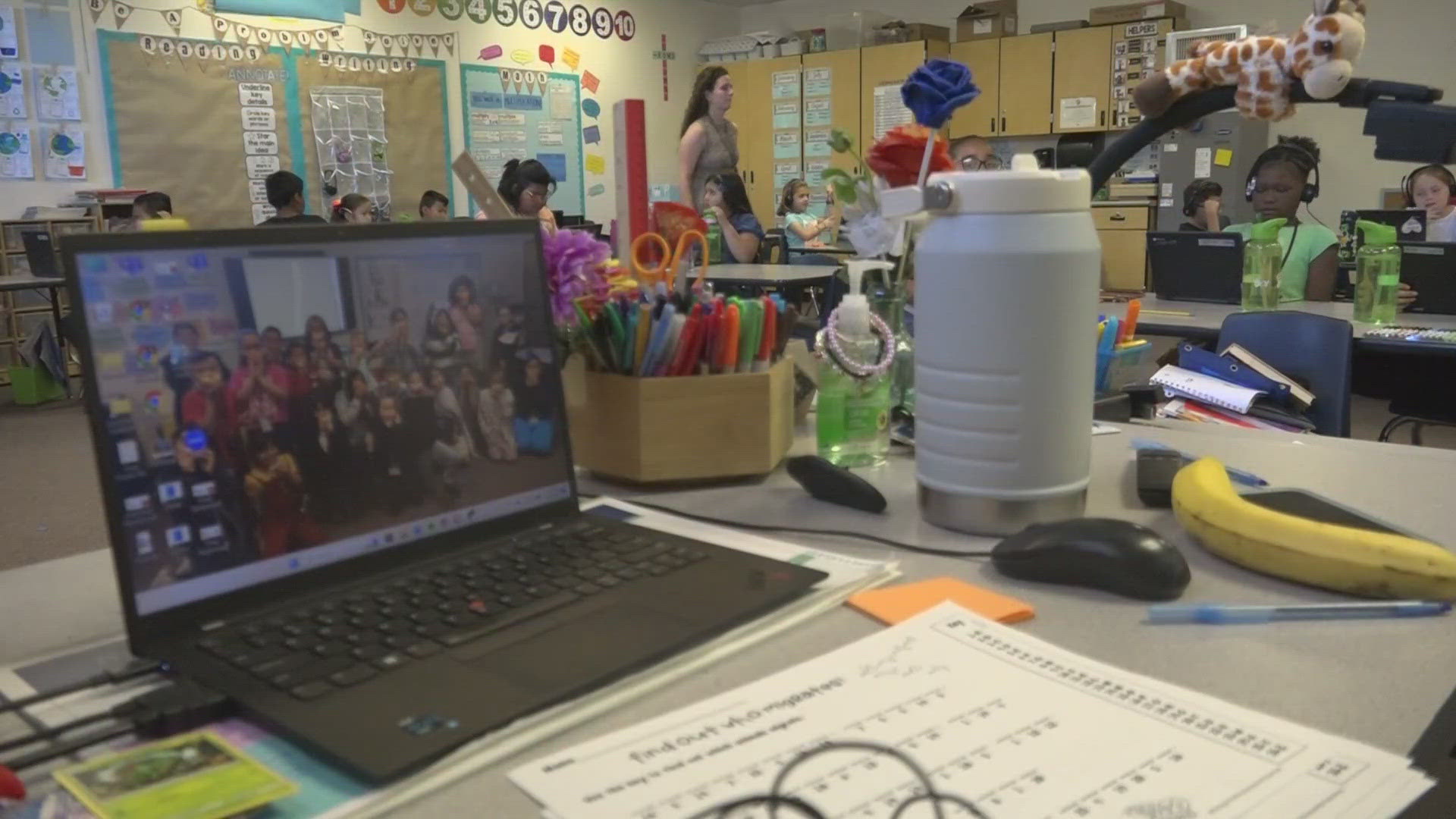PHOENIX — It’s the new buzz phrase in public education: chronic absenteeism.
Arizona students continue missing school at alarming rates since the pandemic. While a governor’s task force is researching solutions, a report isn’t expected until later this year. In the meantime, school districts are getting creative with limited resources to attack the problem.
More than 1 in 4 students 'chronically absent'
Attendance rates have improved but remain more than twice as high compared to pre-pandemic levels, according the nonprofit Read One Arizona.
In the 2022-2023 school year, 28% of students were considered chronically absent. The average was higher (35%) for students categorized as “economically disadvantaged.”
'We constantly talk about attendance'
A student is considered “chronically absent” if they miss 18 days over the school year (no matter the reason), which amounts to an average of two days or more per month.
“I think COVID made it seem school was optional for some people,” said Sunnyslope Elementary Principal Chance Whiteman.
Whiteman works in the Washington Elementary School District, the largest K-8 district in the state. It serves more than 17,000 students. The district’s boundaries surround many established, lower-income neighborhoods. All but two of the district’s 33 schools qualify for Title 1 funding.
Administrators are implementing several strategies to motivate students and educate parents about the link between attendance and academic success.
“We constantly talk about attendance,” he said.
Tracking absent students and intervening early
Whiteman said his school is utilizing a program, “Kids at Hope,” intended to foster relationships between teachers and students and to motivate students to focus on their futures.
“We think those positive relationships are a way to get kids going to school more, and to want to come to school,” Whiteman said.
A computer program that tracks day-to-day attendance of every student is also proving useful. It flags administrators of students showing signs of chronic absenteeism, allowing them to intervene early by contacting parents.
“We used to view attendance numbers as a whole, and usually at the end of the year. Now we are looking at each individual student every day,” Whiteman said.
Reasons include lack of transportation, illness
Some teachers at Sunnyslope Elementary have adopted the practice to personally call parents of a child on the morning they don’t show up for school.
“I just say 'Hey, just checking in if your kid is coming. Are they feeling ok? Is there anything I can do?'” said Quinn Fullerton, a third grade teacher at Sunnyslope. Fullerton's class has higher attendance rates than the average.
Fullerton said since COVID, parents are more likely to keep their child home from school for illness out of an abundance of caution.
Updated guidance from the Centers for Disease Control and Prevention said families can treat the virus like other respiratory illnesses. Students testing positive for COVID can return to school if they’ve been free of a fever for at least 24 hours.
Fullerton said another reason students don’t show up is because their parents don’t have flexible work schedules. If the child misses the bus, there is no way to get them to school.
“The hard thing is there is not a lot I can do because I can’t go pick them up on my way to school,” Fullerton said.
'Don’t be Tardy for the Party'
The district assembled an attendance team of 18 people representing health care, social services, communications and parents.
“We widened our scope of stakeholders. In the past it was solely at the school level,” said Rich Morris, director of school support for WESD.
Administrators developed strategies to reduce absenteeism such as posting signage at all schools that emphasize the importance of attendance. Schools send certificates each quarter to students with perfect attendance. The district makes attendance an ongoing topic on social media and in emails to families.
“Now from day one of school until the last day, we are constantly checking where attendance is,” Morris said. “We are trying to be very transparent with the community. We talk about, where’s our percentage? What’s our goal for the month?”
District surveys found peers are a strong motivator for attendance. One school has the motto, “Don’t Be Tardy for the Party.” It plays music for students as they arrive on campus.
Slow, steady gains
In 2018, the district had 14% chronic absenteeism. In 2022 that number was 48%. Last year the district improved its chronic absenteeism rate to 38%, which is near the state average for districts with a similar economic profile.
Daily attendance in the district has slowly improved from a low in 2022 of 88%. It is now just over 92%.
Administrators emphasize the importance of teachers developing relationships with the students and with their families while creating a welcoming, nurturing culture.
“The biggest challenge for us is spreading that message to all that the number one focus is relationships, building those relationships with kids so they show up to school,” Morris said.
UP TO SPEED

